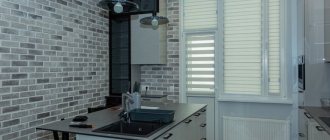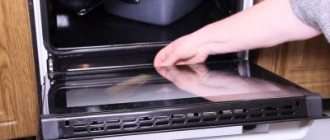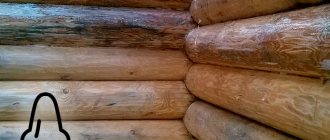A preschool institution requires special attention to maintaining cleanliness, since the health of the children attending the kindergarten directly depends on this. Cleaning in a preschool educational institution is regulated by SanPiN 2.4.1.3049-13 - this document determines the procedure for work, requirements for detergents and cleaning products used, and features of cleaning in the interior and surrounding areas of the kindergarten.
Cleaning in a kindergarten is divided into two types: daily and general. The main task of daily cleaning is to maintain favorable sanitary conditions and cleanliness. Daily cleaning in a preschool educational institution includes: washing and disinfecting toys, wiping furniture, washing plumbing fixtures, cleaning carpets and mopping floors, ventilating rooms and quartzing. Regular cleaning allows you to eliminate the rapid development of pathogenic microflora in the premises and, thereby, reduce the load on children's immunity. It is very important to carry out wet cleaning in a timely manner to prevent dust accumulation in the premises. Removing dust helps reduce the risk of allergic reactions in students. Finally, careful cleaning of surfaces, in particular in bathrooms and food service areas, ensures the prevention of intestinal infections.
General cleaning of premises in preschool educational institutions is carried out according to a schedule based on SanPiN. An example of such a graph is shown in the figure below.
General cleaning in the preschool educational institution is performed monthly. Unlike everyday cleaning, general cleaning is carried out with special care and covers absolutely all rooms and surfaces. During the cleaning process, all hard-to-reach places that are not treated during daily cleaning are cleaned: baseboards, floor areas under furniture, lighting fixtures, ventilation hoods, etc. Carpets and blinds are wet cleaned and heating radiators are washed. Mattresses, blankets and pillows are ventilated. All teaching materials are thoroughly cleaned of dust. Window cleaning is also carried out. Carpets can be dry cleaned if necessary.
General cleaning and disinfection is carried out in the preschool educational institution on dates appointed by the head of the institution.
In addition, the kindergarten periodically cleans the surrounding area from snow and ice, fallen leaves, debris, etc. An example of such a schedule indicating the frequency is shown in the figure below.
Cleaning of preschool premises in the warm and cold seasons is carried out according to a similar schedule. The only exception is the frequency and duration of ventilation, which varies depending on the season.
Cleaning premises in preschool educational institutions - basic rules
SanPiN regulates the basic procedure for cleaning premises in all preschool institutions, which is mandatory. Twice a day it is necessary to carry out wet cleaning using safe detergents. Wet cleaning includes wiping surfaces from dust and washing floors. Bedrooms are cleaned after quiet time, meal rooms after meals, and gyms after classes.
Wet cleaning of premises in a preschool educational institution also includes mandatory washing of all objects with which children interact: toys, furniture, sports equipment, etc. All tables must be washed with soap before and after meals. It is also necessary to clean chairs and changing tables in nursery groups. Sports equipment is cleaned after each child's gym session. Mats are cleaned with soap and soda solution.
Particular attention must be paid to washing and disinfecting bathrooms. Toilets, cisterns, shower trays, sinks, taps must be washed with soap and treated with a disinfectant. Children's potties should be cleaned with a brush and soap after each use.
In the winter period of the year, including in connection with the seasonal increase in the incidence of influenza and ARVI, the issue of compliance with standardized microclimate parameters (temperature, relative humidity, air speed) in educational institutions for children and adolescents (schools, kindergartens) is especially relevant.
As a result of human activity, substances released from skin, dirty clothes, and food debris enter indoor air; The temperature and humidity of the air rise, and the concentration of carbon dioxide increases. If there are sick children in a group or class, then when they cough or sneeze, viruses and bacteria get into the air.
There is always dust in the air of enclosed spaces; along with the air, dust particles enter the child’s respiratory tract and mechanically irritate the mucous membrane, which is more delicate than in adults.
The degree of air quality is directly dependent on the number of children and the duration of their stay in the room.
Humidity and air speed are very important in the heat exchange between a child and the environment. Both high and low humidity have a negative effect on the child’s body. To maintain optimal air conditions in the premises of children's organizations, it is important to regularly remove exhaust air and replace it with outside air.
Ventilation
School
All rooms must be ventilated daily.
Educational rooms are ventilated during breaks, and recreational rooms are ventilated during lessons.
Before the start of classes and after their completion, it is necessary to carry out through ventilation of the premises (if there are 2 shifts of training - after each shift).
Kindergartens
Airing in groups is carried out for at least 10 minutes every 1.5 hours in the absence of children, and ends 30 minutes before they arrive from a walk or class. In the bedrooms, cross-ventilation is carried out before children are put to bed.
The duration of through ventilation is determined by weather conditions, wind direction and speed, and the efficiency of the heating system. When airing, a short-term decrease in the air temperature in the room is allowed, but not more than 2°C.
Physical education lessons and sports sections should be conducted in well-aerated rooms.
Through ventilation of premises in the presence of children, ventilation through toilet rooms is not allowed.
With good heating, efficient operation of the ventilation system, and proper organization of room ventilation, it is not difficult to ensure the standard microclimate parameters. This means that children, being in an educational organization in comfortable conditions, will be less susceptible to diseases, including infectious ones.
Wet cleaning
Wet cleaning in educational institutions, its frequency and quality also plays a big role in the prevention of ARVI.
Schools
All premises of educational institutions are subject to daily wet cleaning using detergents.
Toilets, dining rooms, lobbies, and recreation areas are subject to wet cleaning after each break.
Cleaning of educational and auxiliary premises is carried out after the end of lessons , in the absence of students, with windows or transoms open.
If a general education organization works in two shifts, cleaning is carried out at the end of each shift: floors are washed, places where dust accumulates are wiped (window sills, radiators, etc.)
The premises of a boarding school at a general education organization are at least once a day.
To carry out cleaning and disinfection in general education organizations and boarding schools at general education organizations, they use detergents and disinfectants that are approved in accordance with the established procedure for use in children's institutions, following the instructions for their use.
Disinfectant solutions for cleaning floors are prepared before direct use in restrooms in the absence of students.
Disinfectants and detergents are stored in the manufacturer’s packaging, in accordance with the instructions, in places inaccessible to students.
At least once a month, general cleaning is carried out in all types of premises of a general education organization and boarding school at a general education organization.
General cleaning by technical personnel (without involving the labor of students) is carried out using approved detergents and disinfectants.
Exhaust ventilation grilles are cleaned of dust monthly.
Kindergartens
In the catering area
daily:
— washing floors, removing dust and cobwebs, wiping radiators and window sills;
weekly
— washing walls using detergents, lighting fixtures, cleaning glass from dust and soot.
once a month
— general cleaning followed by disinfection of all premises, equipment and inventory.
All premises of the kindergarten are cleaned using a wet method using detergents at least 2 times a day with open transoms or windows, with mandatory cleaning of places where dust accumulates (floors near baseboards and under furniture, window sills, radiators, etc.) and frequently dirty surfaces ( door handles, cabinet handles, switches, hard furniture, etc.).
Wet cleaning:
Sleeping - after night and daytime sleep,
Group meals - after every meal.
Gym - once a day and after each lesson. After each lesson, air for at least 10 minutes. Sports equipment is wiped daily with a damp cloth, mats - using a soap-soda solution. Carpets are cleaned daily using a vacuum cleaner .
Carpets daily and cleaned with a damp brush or knocked out in specially designated areas in the utility area, then cleaned with a damp brush.
Sanitary equipment is disinfected daily, regardless of the epidemiological situation.
General cleaning of all premises and equipment is carried out once a month using detergents and disinfectants.
Windows outside and inside are washed as they become dirty, but at least 2 times a year (spring and autumn).
When all of the above measures are carried out, the likelihood of acute respiratory viral infections among children is sharply reduced.
Cleaning the catering area in kindergarten
The kitchen is a room on the cleanliness of which the health of each student depends. SanPiN standards strictly regulate the requirements for the cleanliness of catering units in kindergartens. Kitchen cleaning must be done daily. In addition to washing floors, such cleaning includes: removing dust and food debris from work surfaces, wiping walls and window sills, washing cabinets, radiators and lamp covers. Work tables should also be washed after each food preparation using hot water and detergent. Tables for working with raw products must be disinfected at the end of the shift.
Washing and storing dishes in the catering preschool educational institution also has its own nuances:
- utensils for employees and students should be stored separately;
- all utensils are marked according to their intended purpose;
- Washing dishes is carried out in two stages: first, the dishes are washed with hot water and detergent, then rinsed thoroughly.
Read more about washing and processing dishes in preschool educational institutions in the corresponding article.
How often should the toilet be cleaned?
To clean the toilet you will need:
- Cleaning equipment (rags, napkins, mops, brushes, mops);
- Containers (buckets for washing toilets, floors, surfaces);
- Detergents and disinfectants;
- Containers for preparing and storing disinfectants:
- Protective clothing (gown, disposable gloves, mask).
All cleaning equipment must be marked and used exclusively for its intended purpose. That is, it is necessary to separately allocate equipment for washing toilets, floors, surfaces, etc.
Disinfectants for toilet cleaning
Restrooms are favorite habitats for germs. And therefore, cleaning the toilet must be carried out with disinfectants. Cleaning public toilets with household chemicals alone is unacceptable, since it does not ensure the destruction of germs on surfaces.
The most optimal and economical disinfectants for the bathroom are chlorine-containing products. So, for cleaning toilets we recommend using Septolite-DHC. This chlorine-containing disinfectant is available in tablets that quickly dissolve in water.
To disinfect the toilet, you can also use modern disinfectants based on HOURS, such as Septolite Light and Septolite Plus. They are not inferior in effectiveness to chlorine-containing products, and do not have a pungent odor. These are concentrated disinfectants that are diluted in water according to the instructions.
Cleaning in preschool educational institutions during coronavirus
The COVID-19 pandemic has made adjustments to the work of many institutions, including kindergartens. With the continuing threat of coronavirus, cleaning requirements in preschool educational institutions are becoming more stringent, both general and daily.
The main difference is the constant use of disinfectants, as well as increased attention to the treatment of contact surfaces. All used toys and equipment are treated with a disinfectant. In particular, plastic and rubber products are placed in a disinfectant solution. All surfaces touched by employees and children are sanitized at least twice a day.
The cleaning schedule for the preschool educational institution is drawn up by the head of the institution, and he also controls the implementation of this schedule. In addition, the quality of cleaning is periodically checked by employees of the sanitary and epidemiological station.
Proper Restroom Cleaning Schedule: Sample Form
Since the toilet in any enterprise is one of the most frequently visited places. That is why it is imperative to keep it clean and tidy.
To avoid controversial situations, it is imperative to draw up a special schedule for registering toilet cleaning.
What needs to be noted in such a document? Key points on the form include:
- list of janitor responsibilities;
- date of the cleaning procedure;
- its exact time.
Also, such a form must include the full name of the person who is responsible for sanitizing the restroom.
Competent and constant maintenance of this kind of documentation allows you to not only maintain the toilet at the site in order.
The schedule and its adherence ensure that those responsible for cleaning are identified and their work is accounted for.
Watch the video: Soda. Toilet. How to clean a toilet with soda without chemicals to remove plaque from the smell
How to automate cleaning control?
To do this, it is convenient to use the software module “Health Protection of Employees and Children” of the System for Monitoring the Activities of an Educational Institution (SKDOU). It contains more than 20 logs and allows you to monitor COVID-19 in order to reduce the incidence of illness in children and employees.
For example, look at the video on how to work in the system with a general cleaning log:
You can try the program for free here.
Author of the article: Lidiya Sitnikova
Logbook rules for keeping track of current sanitary procedures
When maintaining such a journal, you need to take into account some rules. Since this document is in a prescribed form, it must:
- number;
- lace;
- glue all ends of the cords;
- put the seal of the institution.
The signature of the responsible person is also placed here.
In this case, basic information must be written down on the cover of the document. These include the name of the organization and the dates of not only the start, but also the end of journaling.
Do you like our article? Read other useful materials! Journal of general cleaning - https://strazhchistoty.ru/cleaning/cleandoc/zhurnal-ucheta-genuborok.html Cleaning schedules - https://strazhchistoty.ru/cleaning/cleandoc/grafik-uborki- pomeshchenij.html How to draw up a contract for cleaning a premises? — https://strazhchistoty.ru/cleaning/cleandoc/dogovor-na-uborku-pomeshheniya.html
Bathroom general cleaning schedule
You can determine your own schedule for general cleaning. For some, it will be enough to carry out all the procedures once every 3 months, but for others, even once a month will not be enough. It all depends on how often the bathtub is used in your home.
During general cleaning, the following operations should be carried out:
- First, remove the curtain and soak it in a soap or powder solution. This will remove smudges and stagnant stains from it.
- All bottles and various hygiene products must be removed from the bathroom. The easiest way is to use a basin for this.
- If there is a rug in the bathroom, it is also worth soaking and washing it. If it is clean, take it out of the bathroom along with the bottles.
- On the surface of the bathroom and sink, apply a detergent intended for the surfaces from which these containers are made and leave everything for the time specified in the instructions for the detergent. The same operation should be done with the toilet, only separate detergents should be used for the inner and outer surfaces.
- Thoroughly wash all mirror and glass surfaces, including shelves.
- Using an old brush (sponge, washcloth), remove any remaining detergent from the surface of the sink and bathtub, and rinse it with cold water.
- Next, use a brush to clean the inside surface of the toilet and flush the water. The outer part is wiped dry with rags or sponges.
- Now you can start cleaning the floor. This must be done using special disinfectants.
- After all these procedures, you can put all hygiene items in their places, and also hang the curtain and rug in place.
Helpful Tips and Tricks
- If rust stains appear on the surface of the bathtub, you need to use vinegar to wash them off, and if there is limescale deposits, you can add a little vinegar to the detergent (or buy Pemoxol).
- Sometimes a yellowish coating may occur. You can use chlorine bleach to remove it, but you need to rinse it off thoroughly at the end.
- When cleaning a bathtub or sink, do not use metal brushes.
- You can achieve a pleasant smell in the bathroom with the help of orange. Hang it in your room and stick in some toothpicks or nails.
- Microfiber can be used to clean glass and mirror surfaces. This material is able to remove a wide variety of contaminants without the use of special detergents.
- To make your faucets sparkle, you can treat them with a solution of vinegar and salt.
- When cleaning tiles, it is very convenient to use detergents in the form of an aerosol.
Caring for the bathroom in words looks quite troublesome, but even general cleaning, if you have all the means and follow the appropriate regime, will not take more than an hour.
Schedule and frequency of cleaning at apartment building entrances
Order No. 191 of the State Construction Committee of the Russian Federation, dated 2000, and its annexes establish the procedure, regularity and content of the activities of Management Companies to clean up the territory entrusted to them. The agreement that residents enter into with the management company includes a separate section dedicated to cleaning common areas. It clearly indicates: a schedule for cleaning entrances, a list of work carried out by technical employees and the interval for their completion, and also provides a calculation for payment for the service.
The duty of the cleaner is to restore order at several objects, provided that their quantity does not negatively affect the quality of the cleaning performed.
According to current standards, activities to ensure the cleanliness of the common areas of apartment buildings are as follows:
- Sweeping of staircases and flights from the 1st to 2nd floors with a damp brush (broom) is carried out daily (excluding holidays and weekends).
- Sweeping of staircases and flights from the 3rd to the top floor with a damp brush is carried out once every 3-4 days.
- Wet cleaning of staircases and flights from the 1st to 2nd floors is carried out once every 14 days.
- Wet cleaning of staircases and flights from the third to the top floor is carried out monthly.
- Ceilings are cleaned of dust once every six months.
- Wiping walls, lighting fixtures, radiators, doors with a damp sponge is performed once every six months.
- Wiping mailboxes, window sills, and stair railings with a damp sponge is done monthly.
- Window glass is washed once every six months (spring-autumn).
- The area in front of the entrance door is cleaned weekly.
In addition, wet cleaning of all surfaces using disinfectants should be carried out regularly (monthly). In buildings equipped with elevators, the floors of the elevator cabins are washed daily.
It is necessary to take into account that the management company may make changes to the standard list of cleaning activities or the frequency of their implementation, so you need to carefully study these points in the agreement for the provision of services
Sample application for the provision of management services
In cases where the restoration of order in the entrance for some reason continues to be carried out by the residents, there is a possibility that the management company neglects its responsibilities, citing the lack of an additional agreement with the apartment owners. In this situation, you should write a collective application addressed to the director of your Managing Organization for the provision of entrance cleaning services.
The document is drawn up in simple written form according to standard rules:
- In the upper right corner are the personal data of the addressee (indicating the position and full name of the manager, the name and legal address of the management company), as well as information about the applicant (from the residents of house No. located at the address).
- The following is a request for the provision of cleaning services for entrances to the house at the specified address (it is advisable to support the application with references to current legislative acts).
- At the bottom is the date and signatures of the applicants (or the applicant - this may be a representative of the house committee, vested with certain powers at the general meeting of apartment building residents).
The document is drawn up in two copies and one of them is transferred to the management office. On the second copy, her employee must put a mark with the date of receipt of the application. This is necessary in case the management organization ignores the application. The presence of an endorsed appeal will allow residents to further challenge the actions of the management company or prove its inaction in higher authorities.
Approximate type of application: application for the provision of management services
What is included in entryway cleaning?
According to the law, in many countries, residents of the house are responsible for cleaning the entrances and areas adjacent to the house. But in some countries they make an exception. They hire special people for the position of cleaner. Still, most people focus on cleaning by the residents themselves. For effective cleaning, the territory is divided into several parts:
Residents can also hire a special cleaning company, which is decided at the meeting. But serious seasonal problems may arise due to weather changes. Some companies and people refuse to clean their yard during certain seasons. So, if the second option was chosen, then it is worth looking through several companies and discussing in advance the cleaning schedule for an apartment building and seasonal features.
Seasonal cleaning features:
Factors influencing the setting of standards
The appropriate cleaning standards are established based on several factors: the area of the room, its configuration, the number of people present in it during working hours, the volume of work or the technological map. The latter is especially carefully coordinated with the client. The fact is that complete cleaning of an office with two wall shelves and one desktop is much easier and faster than in the case of a room of the same size, but with five computer desks, various cabinets, office equipment and other items. A schedule for performing cleaning work is also agreed upon with the customer, including calculation of the time for each operation, as well as the number of personnel, materials and equipment required in accordance with the standards. Based on the characteristics of the premises and other data, the cost of the services provided is calculated.
How should you clean the bathroom?
Keeping the “heart” of the room clean increases the value of the property and reduces the cost of replacing or repairing plumbing fixtures, as well as tiles and paint.
Regular cleaning is a must, but often a few things get overlooked. Preparing a cleaning checklist and performing cleaning activities in accordance with it will ensure that every inch of the room is cleaned.
All you need to do is check its execution.
Stages of cleaning a bathroom:
- Clean the bathtub. Apply the cleaner to the walls, scraping stains in a circular motion from top to bottom. Rinse the walls with water to remove the cleaner and wipe with a damp cloth. Wipe mirrors and glass surfaces. Rub until shiny.
- Treat your shower to prevent mold growth. Clean the shower area. Wipe down the rods, towel rings, and shower. Use a cleaner.
- Wash the sinks. Wash the sink with a sponge or damp cloth using a cleaning product, you can use vinegar for a deep clean. Wipe down faucets and fixtures, toothbrush holder, and soap dispenser. Fill the soap dispenser.
- Disinfect the toilet. Pour in disinfectant liquid, wait 15-20 minutes, and use a toilet brush to clean off all stains. Wipe with a sponge inside as well as outside.
- Empty the trash can. Spray the inside and outside of the trash can with all-purpose cleaner and wipe it with a rag.
- Clean the exhaust fan vents.
- Put it away in your first aid kit. Take out the contents of the medicine cabinet, place it in the sink, then wash the walls and shelves. Scrape off any dirty spots.
- Clean out the cabinets. Lightly dampen the cloth with water and cleaner and clean the cabinets and drawers.
- Remove dust. Wipe dust from lamps and switches. Wash and clean window panels, tracks, ledges.
- Replenish toilet paper if needed.
- Wash the floor. Starting at the farthest corner of the room, work the mop toward the door, alternating between left and right. Wash the floors a second time using clean water, without cleaner.
Check everything on the list and get a sparkling clean room!
This 11-step guide can thoroughly clean the dirtiest room in just a few hours. Remember: a bathroom cleaning schedule is the key to cleaning success.
If you liked our material, share it with your friends on social networks or just send them a link. A complete checklist for cleaning indoor bathrooms will be useful to your colleagues.
Read other articles on the Guardian of Purity portal. Stay with us!
Inventory
Storage of equipment There are requirements for equipment and detergents that can be used during cleaning.
They must be safe and effective. And the employee must have a uniform. Rules for the selection and storage of equipment and disinfectants:
- cleaning equipment should not be stored in the school toilet, but in a special storage room;
- containers and other accessories should be marked in different colors depending on the room for which they are used;
- buckets must be signed so as not to be confused;
- It is allowed to use only equipment that is subject to disinfection;
- after each use, rags, rags and other devices are disinfected;
- chloramine solution, Samarovka, Clorosept are used as disinfectants. Devices are treated in each disinfectant liquid for at least an hour;
- Rags for floors and walls in the toilet room should be separate.
You cannot wash the gym and the bathroom with the same rags, or use the same equipment. It is recommended to have a separate disinfectant solution.
Before cleaning, the employee must prepare. The work uses gloves, an apron, and a long-sleeved uniform. Disinfectants should not damage the skin. It is not recommended to hire people with sensitive skin.
Important! To ensure proper order in the school, you need to have an industrial vacuum cleaner.
Books
Regulatory legal actsSocial and human sciencesReligion. Occultism. Esoterics Occupational health and safety Sanitary Pins, SP, MU, MR, GNP Gift books Travel. Rest. Hobby. SportsScience. Technique. MedicineSpaceRostechnadzorOtherArt. Culture. PhilologyBooks from the publishing house "Komsomolskaya Pravda"Books in electronic formComputers and the InternetUsed booksSNiP, SP, SO, STO, RD, NP, PB, MDK, MDS, VSNOGOST, OST Encyclopedias, reference books, dictionariesHome circleChildren's literature Academic year Collections of dish recipes for public catering establishmentsEconomic literatureFiction literature
Working time schedule for 2022 (timesheet): how to fill it out
There are two unified forms: T-12 and T-13. The difference between them is that the T-12 form is filled out only manually or in a text editor, and it has a special section for calculating wages. Timesheet T-13 can be filled out using specialized computer programs and access control systems, which are used to record visits by company employees to their work. This form does not have a block for calculating wages; it must be calculated in other registers.
The time sheet is the primary document on the basis of which employees’ wages, payments from them and additional payments accepted in the organization are calculated. Since the listed payments reduce corporate income tax or taxable income under the simplified tax system, the document should be fixed as a primary document in the organization’s accounting policy. It is not necessary to use the unified form from 01/01/2013
It is important to consolidate your own version of the form in the accounting policy and ensure that it contains all the necessary details, the mandatory presence of which for primary documents is established by law 402-FZ
The time sheet is drawn up in one copy by a person authorized to monitor the control of working hours throughout the organization or in a separate structural unit. The list of persons signing it is established by the internal administrative act of the organization. At the end of each month, the completed timesheet is transferred to the accounting department.
Let's look at the procedure for filling out the timesheet using the T-13 form as an example.
The name of the organization and structural unit must be filled in the header (when monitoring working hours in structural units). The serial number is assigned in accordance with the accepted numbering in the organization. The date of compilation and the reporting period must be filled in as details of the primary document.
You can download a sample work schedule in Excel at the end of the article. Now let’s look at how to calculate a work schedule and draw it up correctly.











